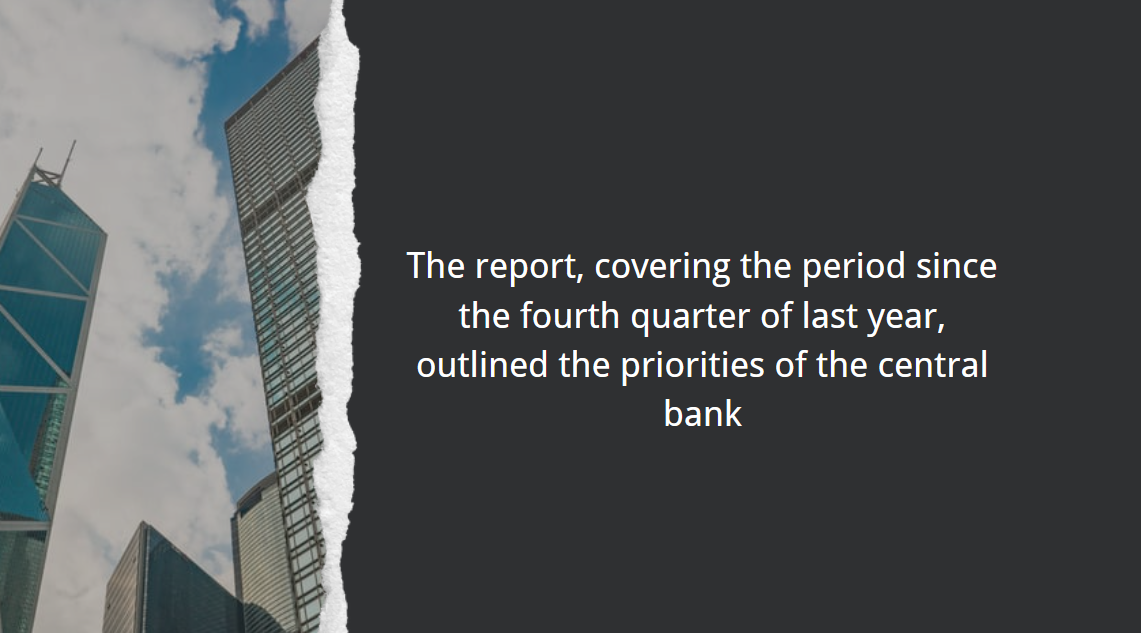Some lessons for crisis management from recent bank failures
I would like to thank the organisers of the 2023 High-Level Meeting on banking supervision for the Americas for inviting me to speak today. It is a pleasure to join you to discuss lessons from the bank failures that occurred in March this year.
Motivation
Recent bank failures in the United States and Switzerland have prompted a debate about the adequacy of the current prudential framework for preserving financial stability.
In particular, these episodes have shed light on how bank resolution frameworks are functioning. As you know, resolution frameworks are one of the key innovations that followed the Great Financial Crisis (GFC). Authorities adopted several measures to make bank failure management frameworks less dependent on public support. In particular, the Financial Stability Board issued new international standards to enable the orderly resolution of global systemically important banks and other banks that are systemic in failure. These sought to ensure that failing banks' critical functions could continue, while keeping the involvement of national treasuries to a minimum.
The 2023 bank failures were the first significant test of those reforms. I think it's fair to say that their performance was mixed. The interventions by the Swiss and US authorities did preserve systemic stability – a key objective of resolution frameworks. But both involved public support. And in Switzerland, the authorities opted to impose losses on some creditors without using the resolution framework.
Against that background, national authorities and standard setters should take this opportunity to review the framework and understand how we can ensure that authorities have credible options for resolving banks.
The recent bank failures
Let me first recall some of the key features of the bank failures and the strategies that were adopted in the United States and in Switzerland.
In early March 2023, the US regional banking sector experienced severe stress. Two banks failed: Signature Bank and Silicon Valley Bank. Both had a high proportion of uninsured deposits. And both experienced large and rapid deposit outflows amid concerns about the sustainability of their business models. Over a couple of days, the FDIC took both banks into receivership, created temporary bridge banks and eventually sold the banks in the market.
This resolution strategy was possible only because the US authorities invoked a "systemic risk exception". This allowed authorities to override the usual limits on the amount of funds the FDIC can use to finance a resolution. With it, the FDIC could cover all deposits, including the large amounts that were not insured. Shareholders and certain unsecured debtholders were not protected.
A week after the US bank failures, following an acute liquidity crisis at Credit Suisse, the Swiss authorities announced that UBS and Credit Suisse would merge and provided liquidity support for this process. This was described as a "commercial transaction". Importantly, the merger was supported by decrees enacted using emergency powers, which allowed the Swiss National Bank to provide liquidity support to UBS and Credit Suisse. The transaction also involved the contractual writedown, in full, of all the outstanding Additional Tier 1 (AT1) capital instruments issued by Credit Suisse. However, Credit Suisse shareholders retained some residual equity.
How resolution worked in practice in 2023 – lessons
These cases demonstrated that Switzerland and the United States had effective crisis management frameworks that enabled the authorities to deal with a range of cases.
The authorities were well prepared. They had sufficient powers, tools and funds to manage the failing banks in an orderly manner. And the frameworks gave them enough flexibility to adapt their responses to the prevailing conditions. The latter is important since new technologies combined with social media can lead to a fast-burning crisis of liquidity and confidence, leaving the authorities with only a short window in which to make decisions and implement them.
Both the Swiss and US authorities provided funding through a combination of internal and external sources. Internal resources came through the writedown of at least part of the equity and hybrid capital. External support came from the deposit insurance fund and through public guarantees. In the Credit Suisse case, the write-off of AT1 instruments substantially reduced the costs to taxpayers. It also proved, contrary to the fears of some observers, that a writedown of G-SIB debt instruments is feasible without destabilising markets in any deep or persistent way.
Nevertheless, while the responses were effective, the authorities had to depart from the expected approach. Let me highlight the main differences.
In the United States, the use of the systemic risk exception was required to mitigate the risk of systemic stress in the banking sector. However, the failing banks had not been considered systemic in life and were consequently subject to less stringent prudential requirements, including for resolution planning.
In Switzerland, the authorities decided not to use statutory resolution powers to execute the resolution plan. Instead, they opted for a merger transaction that they judged to be less disruptive to financial stability. Although writing down AT1 instruments delivered significant loss absorption, the resolution plan would have bailed in a wider set of liabilities and therefore involved less public support. This approach also overturned the expected hierarchy of creditor losses that would have applied if Credit Suisse had been put into resolution. Although that was anticipated in the AT1 contracts, it nevertheless had significant, albeit relatively short-lived, repercussions in the market for AT1 instruments.
In both the Swiss and US cases, special facilities provided liquidity. The Swiss government used emergency powers to enable the central bank to provide liquidity with government guarantees. That liquidity was not fully collateralised. In the United States, the Federal Reserve created a new funding programme offering loans of up to one year against collateral valued at par.
We therefore end up with a somewhat mixed picture. The overall story is positive: the authorities' actions avoided the disruption that these bank failures might have triggered. But, to do that, the authorities had to resort to emergency powers or exceptional actions.
Given this difficult balance, let me highlight areas for improvement in our crisis management frameworks or their implementation.
First, banks' loss-absorbing capacity and the credibility of bail-in as a resolution tool. Even if the writedown of AT1 instruments helped reduce the costs to the public purse, greater loss-absorbing capacity in the failing banks would have been preferable.
A fundamental lesson of the GFC was that banks' shareholders and creditors should bear a large share of the cost of their resolution. Significant work has been carried out internationally over the past few years to make bail-in operational. But that work is incomplete. Authorities need to be confident that they can execute a bail-in and markets must believe that a preferred bail-in strategy is not just words on paper.
Importantly, banks should have sufficient liabilities to absorb losses in resolution. Currently, international standards require only the largest banks to maintain minimum gone-concern loss-absorbing liabilities. To make further progress in this area, it is important that other banks can do the same. This is already the case in the European Union, where the requirement applies to all large and medium-sized banks. Other authorities are also bringing forward related initiatives. For instance, in the United States, a consultation1 is under way on a proposed requirement that banks should hold a larger amount of long-term debt, which can be bailed in to manage their failure.
A second area for improvement is the writedown of hybrid capital instruments.
The sale strategy for Credit Suisse wiped out holders of AT1 instruments. Many market participants were insufficiently aware of the contractual terms of individual AT1 instruments and the differences between the applicable frameworks in different jurisdictions. As a result, there seems to be merit in pursuing work aimed at improving the disclosure and understanding of the terms and operation of AT1 instruments. This would reduce the risk of adverse market reactions.2
A third set of lessons concerns the cross-border application of resolution tools.
In the resolution of any large bank, there will always be a cross-border dimension. Resolution actions in one country will need to apply to the bank's operations elsewhere. This is both a legal issue – how do resolution powers apply across borders? – and a question of cooperation between authorities. Good communication with foreign counterparts is essential to effective resolution. This includes financial authorities in jurisdictions where the failing bank is locally systemic, even if those local operations are not systemic from the perspective of the failing bank or its home authorities. When preparing for a possible resolution, it can be hard for authorities to maintain secrecy about the expected intervention while keeping counterparts informed. However, it can aid communication to involve all relevant parties in resolution planning and establish the necessary communication channels in advance.
Finally, there is clearly a need to review liquidity frameworks to ensure that there are adequate funding sources.
Liquidity played a significant role in recent bank failures, both as drivers of the failures and as a crisis management tool. Both the Swiss and US authorities provided liquidity support on special conditions. However, ad hoc facilities are generally less desirable than an established framework. This suggests that further work is required on three aspects relevant to liquidity. First, as is starting to emerge from discussions in various global forums, there is room to improve the supervision of liquidity risk. Second, a review of the operational aspects of Emergency Liquidity Assistance (ELA) could be useful. For example, pre-positioning and assessment of collateral may ease the provision of ELA to stressed banks. Third, countries need to have in place frameworks for the provision of liquidity in resolution. An established facility with terms that reflect the expected requirements of banks in resolution helps to provide authorities and markets with the assurance that sufficient liquidity will be available to support the effective resolution of bank failures with a systemic dimension.
Conclusion
Recent bank failures, and the measures taken by authorities, highlight the significant progress since the GFC in making bank resolution effective. Authorities took prompt and credible action to contain the crisis. In doing so, they preserved financial stability and prevented cross-border contagion.
But these episodes also remind us that the work is incomplete, and some elements of the framework require attention. Issues such as banks' loss-absorption capacity, the practical execution of bail-in and the cross-border challenges it involves, and the provision of liquidity in resolution are not new, or a surprise to the authorities working over the last decade to build robust resolution frameworks. However, the recent failures give added impetus to the ongoing work at the international level on those matters.
Of course, authorities cannot anticipate all the issues that may arise in a bank failure. They may need to depart from script. However, sound planning can help them to respond quickly and flexibly, and to adapt their strategies to the circumstances of the failure.
Furthermore, we should not forget that resolution frameworks and resolution planning cannot replace supervision. Where the root cause of a bank's weakness is an unsustainable business model, robust and proactive supervision is the more appropriate response.
I hope the discussion so far in this High-Level Meeting has given you the opportunity to consider how we can make bank resolution frameworks more solid, and I trust this discussion will continue. I wish you all the best for the second day of your meeting.
1 See Office of the Comptroller of the Currency, Department of the Treasury, Board of Governors of the Federal Reserve System and Federal Deposit Insurance Corporation: "Long-Term Debt Requirements for Large Bank Holding Companies, Certain Intermediate Holding Companies of Foreign Banking Organizations, and Large Insured Depository Institutions", August 2023.
2 For further discussion, see the R Coelho, J Taneja and R Vrbaski, "Upside down: when AT1 instruments absorb losses before equity", FSI Briefs, no 21, September 2023.





















































First, please LoginComment After ~